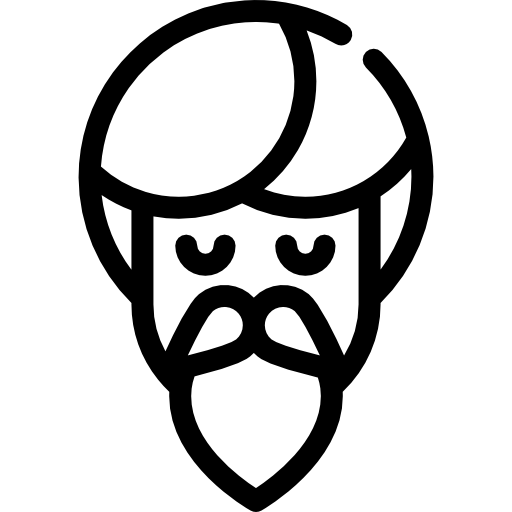
YOGASVARUPE
Shiva and Shakti
Tantra considers the universe to be a manifestation of pure consciousness.
Through this process of manifesting, consciousness divides itself into two parts, which cannot exist without one another (though appearing to divide, they actually remain one and the same).
The two eternally coexist, like ink and the written word, which, though one and the same, are different.
The journey of Tantra is to know them both, at once, as one. Through a process of kundalini awakening, the two are eventually experienced in their state of union.
- One aspect remains as a static, formless quality (Shiva),
- While the other is a dynamic, creative aspect (Shakti).
The two eternally coexist, like ink and the written word, which, though one and the same, are different.
The journey of Tantra is to know them both, at once, as one. Through a process of kundalini awakening, the two are eventually experienced in their state of union.
In Tantric cosmology, the whole universe is perceived as being created, penetrated and sustained by two fundamental forces, which are permanently in a perfect, indestructible union. These forces or universal aspects are called Shiva and Shakti.
When Shiva and Shakti are in union action, movement and creation arise. Until then energy is impregnated with consciousness it is ignorant, disordered, aimless and “blind”. Energy alone cannot produce; consciousness bestows upon its content, form and direction. Conversely, consciousness without energy is dormant power, sleeping energy, and on its own is unable to be the cause of anything.
- Shiva represents the constitutive elements of the universe
- Shakti is the dynamic potency, which makes these elements come to life and act
When Shiva and Shakti are in union action, movement and creation arise. Until then energy is impregnated with consciousness it is ignorant, disordered, aimless and “blind”. Energy alone cannot produce; consciousness bestows upon its content, form and direction. Conversely, consciousness without energy is dormant power, sleeping energy, and on its own is unable to be the cause of anything.

The idea of an act of fertilisation at the divine, purely spiritual level comes to life and is admitted in the tantric cosmogonic conception. The eternal and indestructible union between Shiva and Shakti gives birth to the whole Macrocosm, in its stable, static aspect as well as in its dynamic one.
Tantra symbolises this aspect by comparing the couple Shiva and Shakti with a seed of grain (CHANAKA). Such a seed is made up of two halves so closely linked that they seem one, and one single cover covers them. Symbolically, the two halves represent Shiva and Shakti, the cover represents Maya (the cosmic illusion). When the cover is on, the two halves are separated, but the cover goes off when the seed is about to germinate, unifying thus the two halves in one.
Tantra symbolises this aspect by comparing the couple Shiva and Shakti with a seed of grain (CHANAKA). Such a seed is made up of two halves so closely linked that they seem one, and one single cover covers them. Symbolically, the two halves represent Shiva and Shakti, the cover represents Maya (the cosmic illusion). When the cover is on, the two halves are separated, but the cover goes off when the seed is about to germinate, unifying thus the two halves in one.
The translation of the term Tantra is: "duality in unity". Tantrism can also manifest in the physical body of a man and a woman, only if the person has been transformed into the androgyne manifestation. In this understanding resides the deepest mystery of Tantrism.
Ardhanariswara is ‘the symbol of Tantrism and means “half Shiva and half Shakti”.
This androgynous symbol is not hermaphrodite, and does not reflect ethnic decline as in the modern world.
Yoga is the unity of all the dualities and opposites that creates life force, it teaches us to understand and transcend duality, it is based on the harmonisation of duality within us in a state of transformative equilibrium.
Ardhanariswara is ‘the symbol of Tantrism and means “half Shiva and half Shakti”.
This androgynous symbol is not hermaphrodite, and does not reflect ethnic decline as in the modern world.
Yoga is the unity of all the dualities and opposites that creates life force, it teaches us to understand and transcend duality, it is based on the harmonisation of duality within us in a state of transformative equilibrium.

Shakti and Shiva, as the cosmic dual principles, are an intrinsic part of Yoga, which is a natural process of integration and transformation. The recognition of the cosmic duality leads us to the practice of Yoga, which is the union. The whole Yoga is a development of awareness of the two opposites: Shiva, the seer of the state, and Shakti, its power to see, transforming the two forces from their lower manifestations to their higher reality in pure union.
- Shiva is Pure Being and Shakti is the power to Become.
- Each world has the nature of Shiva, higher Self or Spirit, and the power or dynamic energy of Shakti.
- Each creature has the nature of Shiva and Shakti.
- Shiva is the intrinsic reality; Shakti is the power of action.
- Shiva is beyond every action, while Shakti is the power of action at all levels.
This duality of Shiva and Shakti, or being and action, also happens in the manifest realm. Shiva is reality or durability, while Shakti is relativity, what is always fluctuating.
All yoga practices aim to cultivate a calm awareness of Shiva and a corresponding dynamic force of Shakti. Shiva is reflected in asana’s calmness; Shakti is the power of flowing into it. Shiva is the nature of Prana in the state of balance, Shakti is the power to develop it. Pranayama is an inner energising Shakti practice.
All yoga practices aim to cultivate a calm awareness of Shiva and a corresponding dynamic force of Shakti. Shiva is reflected in asana’s calmness; Shakti is the power of flowing into it. Shiva is the nature of Prana in the state of balance, Shakti is the power to develop it. Pranayama is an inner energising Shakti practice.

Shiva is the beginning of the pratyahara or withdrawal of the senses, the action of Shakti internalises our energies. Shiva is reflected in the concentrated mind and Shakti is the direct power of concentration.
Shiva is the meditative mind and Shakti is the power of meditation.
Shiva is the state of absorption or Samadhi, the highest stage in meditation, in which a person experiences oneness with the universe, and Shakti is the power of bliss.
In Tantra there is no mention of sexual preference but energies Prana (Positive pole) and Apana (Negative pole) which alternate within our subtle body. Labels are a separation that society creates to control our lives with stereotypes and programs. A real Tantrikas refuse every label, every definition, and often are considered outcasts. During the mystical union of the Maithuna these two forces converge and create the experience of Samadhi, in the expression of the thousand-petalled lotus (Sahasrara).
Shiva is the meditative mind and Shakti is the power of meditation.
Shiva is the state of absorption or Samadhi, the highest stage in meditation, in which a person experiences oneness with the universe, and Shakti is the power of bliss.
In Tantra there is no mention of sexual preference but energies Prana (Positive pole) and Apana (Negative pole) which alternate within our subtle body. Labels are a separation that society creates to control our lives with stereotypes and programs. A real Tantrikas refuse every label, every definition, and often are considered outcasts. During the mystical union of the Maithuna these two forces converge and create the experience of Samadhi, in the expression of the thousand-petalled lotus (Sahasrara).
Shiva resides in the Sahasrara Chakra and Shakti in the Muladhara Chakra. When shiva and Shakti unite in the Sahasrara Chakra, knowledge, knower and the object of knowledge become one. Once we have experienced this no desires remain within us because we realise unequivocally that everything, we have ever yearned for is carried within us. In this state of absolute consciousness there are no polarities and therefore no more sorrows; there is only everlasting joy, unconditional love, unlimited compassion and total understanding for all living beings.
- Shakti is the motherly love of God that surrounds us with warmth, caring and protection.
- Shiva is the paternal love of God that gives us consciousness, clarity and knowledge.

The meaning of Shiva and Shakti is occasionally misunderstood when Shiva and Shakti are looked upon as “man” and “woman” and their union is regarded as a sexual relationship. Sexuality is something completely natural, and misunderstanding arises only when sexuality and spirituality are mixed.
In the Himalayan tradition, Yoga, Vedanta, and Tantra are companion practices.
- Sexuality is the union of man and woman
- Spirituality is the union of the human and the divine consciousness.
In the Himalayan tradition, Yoga, Vedanta, and Tantra are companion practices.
Shiva
Lord Shiva is said to live in Svarloka, the realm of gods and demi-gods ruled by Indra, the greatest among them.
Shiva, as distinguished from Parama-Shiva, corresponds to that aspect of the ultimate Reality which is pure consciousness, pure subject, pure I, without even the slightest notion of “I am” or “I am this” or “I am here”.
In his Tantra-Loka, Abhinava Gupta refers to Shiva as “the mother and the Father of the Universe”. Shiva is the seed, or origin of the multidimensional universe, giving rise to all other ontological categories. Yet, there is no duality in Shiva because he is still completely immersed in blissful union with Shakti.
Shiva, as distinguished from Parama-Shiva, corresponds to that aspect of the ultimate Reality which is pure consciousness, pure subject, pure I, without even the slightest notion of “I am” or “I am this” or “I am here”.
In his Tantra-Loka, Abhinava Gupta refers to Shiva as “the mother and the Father of the Universe”. Shiva is the seed, or origin of the multidimensional universe, giving rise to all other ontological categories. Yet, there is no duality in Shiva because he is still completely immersed in blissful union with Shakti.

Shiva is generally portrayed holding a trident, which represents the trinity of Ishvara, Purusha and Prakriti.
Ishvara is the omnipresent, eternal, formless divine principle; Purusha is the Atma and Prakriti is the manifestation, nature. An electric light can be used to explain their relationship. The electric current, which is the source of the light, is Ishvara; the light is Purusha, and the object that is illuminated is Prakriti.
Shiva is Bhairava that creates, protects, destroys, conceals, and his nature is revealed through the cycle of the world. The Lord Shiva, completely free (Swatantra), owns the diversity of forms of creation and destruction, by its very nature.
Ishvara is the omnipresent, eternal, formless divine principle; Purusha is the Atma and Prakriti is the manifestation, nature. An electric light can be used to explain their relationship. The electric current, which is the source of the light, is Ishvara; the light is Purusha, and the object that is illuminated is Prakriti.
Shiva is Bhairava that creates, protects, destroys, conceals, and his nature is revealed through the cycle of the world. The Lord Shiva, completely free (Swatantra), owns the diversity of forms of creation and destruction, by its very nature.
Shakti
The whole universe is Shakti, the energy that has the ultimate aim to recognise the nature of Shiva.
Shakti is the personification of the universe, and her activity is to love, while Shiva shares the state of supreme consciousness. Shakti is fully and eternally complete.
Shakti, the feminine, raises new sources of inspiration and Shiva materialises his seed through her.
Her radiance does not fade in light or in darkness, because all the light and the darkness is illuminated by the Supreme Consciousness. Shiva and Shakti are not aware of being separate, they are linked to each other as fire and heat.
Shakti is the personification of the universe, and her activity is to love, while Shiva shares the state of supreme consciousness. Shakti is fully and eternally complete.
Shakti, the feminine, raises new sources of inspiration and Shiva materialises his seed through her.
Her radiance does not fade in light or in darkness, because all the light and the darkness is illuminated by the Supreme Consciousness. Shiva and Shakti are not aware of being separate, they are linked to each other as fire and heat.

Shakti, she is wondrous and She is everywhere! She dances in the life of the plants; she is the spark in the laugh of the child. She is present in the growing belly, the voice that sings, the heart that loves. She has the urge to grow, to move, to change, to awaken. She is pure energy, chaotically free, the fuel for all activity, infinite energy.
Her full name is Kundalini Shakti and sometimes She dresses like a serpent, coiled tightly around the four petaled lotus that grows at the base of your spine. Here is the bed where She sleeps, giving you grounding and stability, security and peace, with your roots buried deeply in the Earth. Her home at this level is called Muladhara, or root support. It is here that She binds together the physical world. Her instincts help you survive.
Her full name is Kundalini Shakti and sometimes She dresses like a serpent, coiled tightly around the four petaled lotus that grows at the base of your spine. Here is the bed where She sleeps, giving you grounding and stability, security and peace, with your roots buried deeply in the Earth. Her home at this level is called Muladhara, or root support. It is here that She binds together the physical world. Her instincts help you survive.
The 5 Powers of Shakti
There are many aspects, forms and names of Shakti who is the mother of all. In creation she distinguishes herself, or through the will of Siva, into three basic aspects:
- para-shakti (transcendental energy),
- apara-shakti (immanent energy) and
- para-apara-shakti (an intermediary energy).
In the texts of Shaivism, we also find a reference to five supernatural powers of Shakti, awakened in himself by Siva. Their permutation, combination, concealment and manifestation are believed to be responsible for the multiplicity, plurality, diversity and duality of the beings and objects and their forms and shapes in the manifested worlds. The five aspects of Shakti manifested by Siva are:
- chit-shakti or the power of consciousness,
- anada-shakti or the power of bliss consciousness,
- iccha-shakti, the power of desire or will,
- kriya-shakti the power of action and
- jnana-shakti or the power of knowledge

Shiva unleashes these five powers in the beginning of creation and withdraws them back into himself at the time of dissolution. In between he employs these energies for the purposes of creation (srishti), preservation (sthiti), samhara (destruction or modification), concealment (tirobhava) and revelation (anugraha).
Story of Shiva and Parvati
One day, Brahma, the god of creation, looked around and saw that nature had lost its lustre. The world was stagnated. Without Shiva bringing everything to a state of dissolution, Brahma could not create—ideas could not be born, creativity and imagination were blocked. Brahma went to the great feminine force, Shakti, for help. Shakti told Brahma she would be born in a human female form to bring Shiva back into the world.
Shakti was reborn as Parvati. Her whole life, Parvati had a special love in her heart for Shiva. As a young girl, she sat in the meadow fluttering her eyes at him, placing flowers at his feet, cooing his name, and daydreaming about him opening his eyes, taking her into his arms, and feeling love’s embrace. Yet this never happened. All her daydreaming was not doing anything but frustrating her.
Shakti was reborn as Parvati. Her whole life, Parvati had a special love in her heart for Shiva. As a young girl, she sat in the meadow fluttering her eyes at him, placing flowers at his feet, cooing his name, and daydreaming about him opening his eyes, taking her into his arms, and feeling love’s embrace. Yet this never happened. All her daydreaming was not doing anything but frustrating her.

Parvati decided to act. She went to the god of love, Kama, and asked him to shoot an arrow into Shiva’s heart to arouse him. She was sure this would work. Kama, always down for love, shot an arrow into Shiva’s heart and woke him out of meditation. He opened his eyes and feeling the stirring of passion in his body, became enraged that he was brought out of his meditation. With a roar, he opened his third eye, and fire shot out and incinerated Kama. Shiva closed all three of his eyes and retreated inward. Parvati, distraught that her plan failed, sat and thought about what to do next.
Parvati begins to meditate. For thousands of years, she stands on one leg in hot coals. For thousands of years, she stands on the other leg in the cold snow. During these meditations, she builds tapas, inner heat, and her own power grows so strong that Shiva, deep in his meditation, feels her presence and awakens from his meditation. Shiva and Parvati marry and between their love-making, discuss yoga.
Parvati begins to meditate. For thousands of years, she stands on one leg in hot coals. For thousands of years, she stands on the other leg in the cold snow. During these meditations, she builds tapas, inner heat, and her own power grows so strong that Shiva, deep in his meditation, feels her presence and awakens from his meditation. Shiva and Parvati marry and between their love-making, discuss yoga.
Daksha was upset that his daughter had married against his will, and that too to a person so unconventional, he broke all relations with her. When he decided to perform a grand yagna, he invited all his daughters and sons-in-law to the ceremony, but not Shiva and Sati.
Sati begged Shiva to go with her. Shiva refused to give in to her wishes. An upset Sati was determined to attend the grand event and, defying Shiva's wishes, left alone to her father's kingdom. Shiva had warned her against going there, knowing she would be insulted and humiliated. However, when Sati would not listen to what he had to say, he sent his own troops to escort her there.
Sati begged Shiva to go with her. Shiva refused to give in to her wishes. An upset Sati was determined to attend the grand event and, defying Shiva's wishes, left alone to her father's kingdom. Shiva had warned her against going there, knowing she would be insulted and humiliated. However, when Sati would not listen to what he had to say, he sent his own troops to escort her there.

On seeing her arrive at the yagna, Daksha was furious and started shouting and yelling at her, hurling insults at her and Shiva. He made it very clear that neither she nor her husband were ever welcome there. Sati tried to speak with her father and placate him, relating what a wonderful husband Shiva was and how happy their marriage was. However, Daksha turned a deaf ear to all this and just kept shouting at her and humiliating her and Shiva in front of one and all present there.
Finally, Sati could take it no more. She had warned Daksha and Prasuti in the past, before she was born to them, that she would desert them if she was insulted in any way. Accordingly, she flew into a rage and took the form of Goddess Adi Para Shakti. Her family and the kings, saints, sages, Gods and Goddesses present there were frightened by her terrible form. She introduced herself to Daksha, saying that she was the Eternal Power and stated that she would be giving up her mortal life by jumping into the sacrificial fire. She further cursed Daksha that he would be destroyed by her husband, Shiva. Thus saying, she entered the sacred fire and ended her own human life.
Finally, Sati could take it no more. She had warned Daksha and Prasuti in the past, before she was born to them, that she would desert them if she was insulted in any way. Accordingly, she flew into a rage and took the form of Goddess Adi Para Shakti. Her family and the kings, saints, sages, Gods and Goddesses present there were frightened by her terrible form. She introduced herself to Daksha, saying that she was the Eternal Power and stated that she would be giving up her mortal life by jumping into the sacrificial fire. She further cursed Daksha that he would be destroyed by her husband, Shiva. Thus saying, she entered the sacred fire and ended her own human life.





